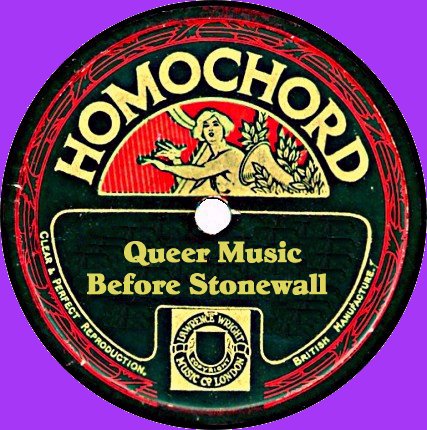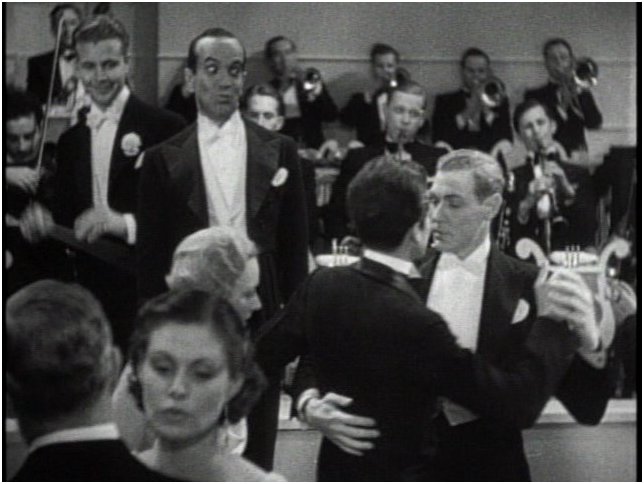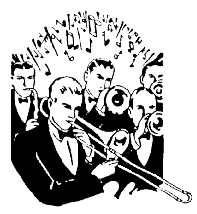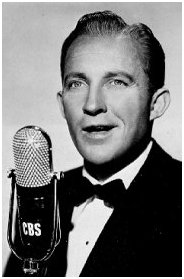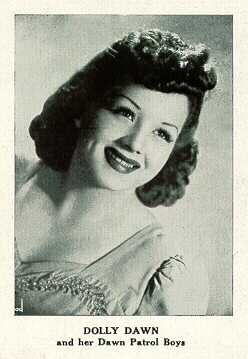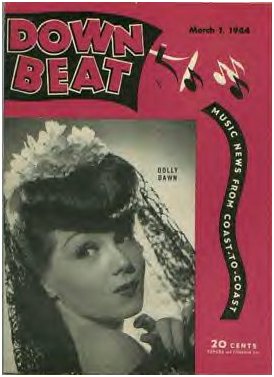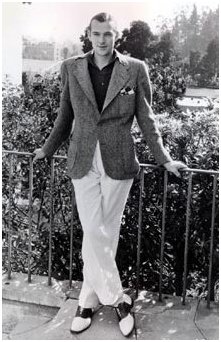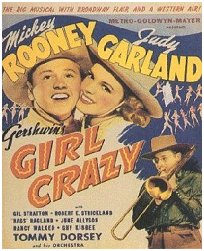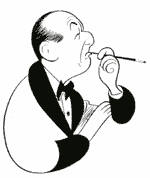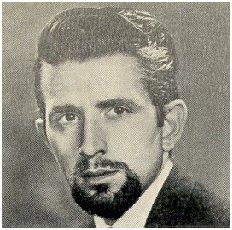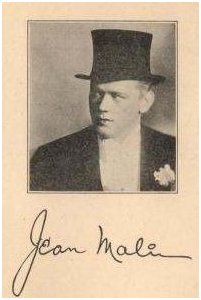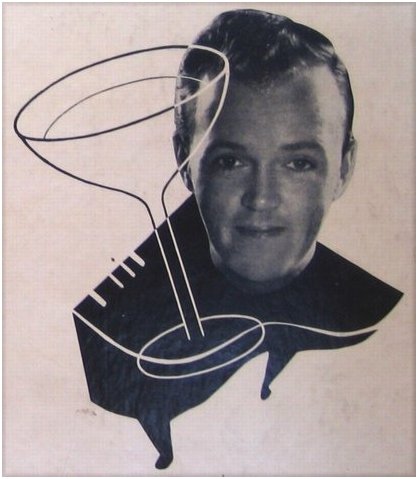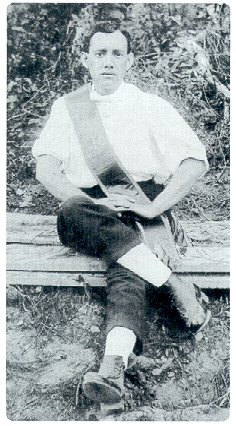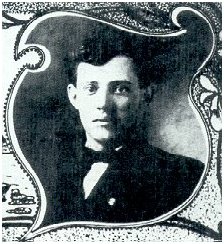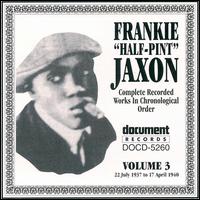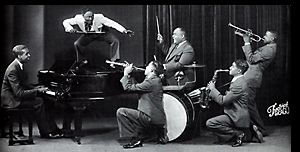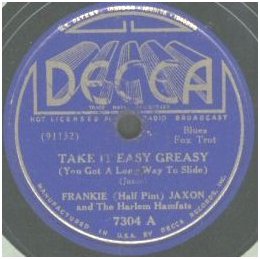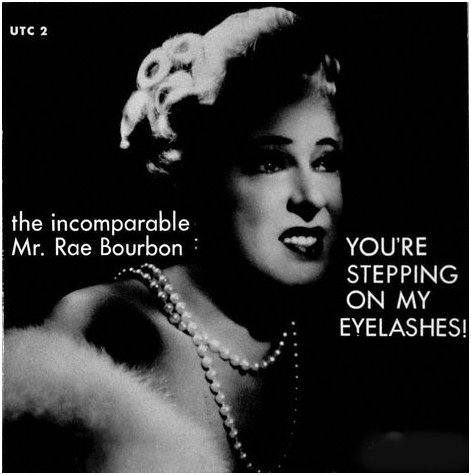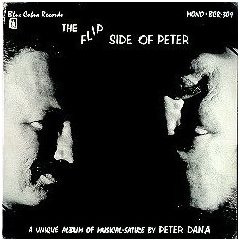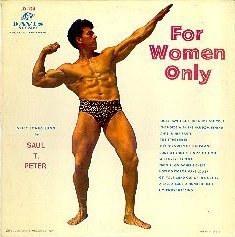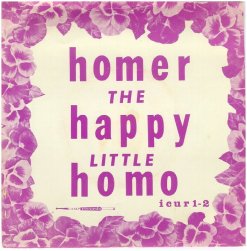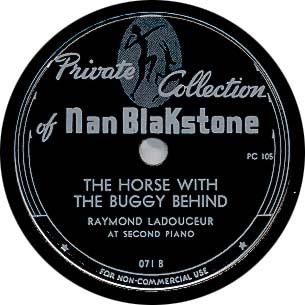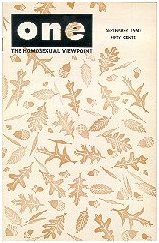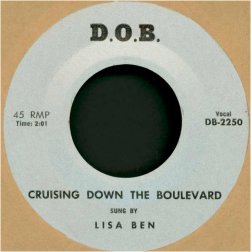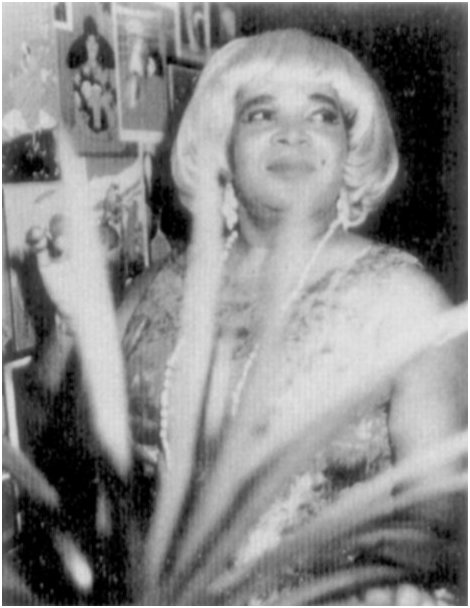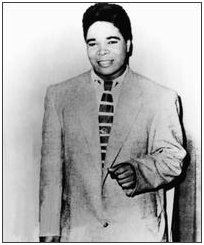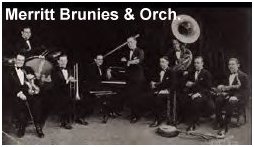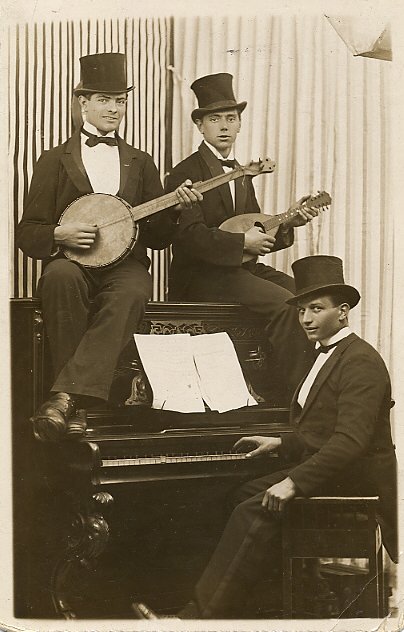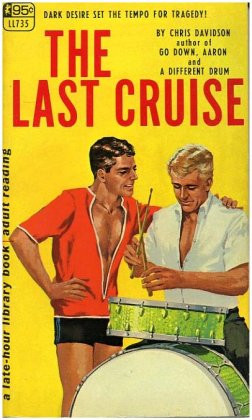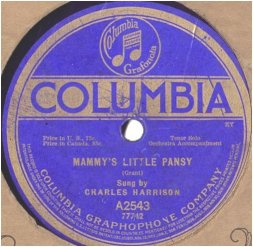 |
June
2004
|
 |
||
 |
|
This show is a special journey to visit gay & lesbian music prior to Stonewall. Gay music, then and now, is a difficult genre to define. Is it music by gay or lesbian artists? Is it music gay people listened to and adopted as their own? And, does it include those novelty songs that are jokes at our expense? I'm covering it all, and roughly breaking it down into the areas of the cross-vocals of the 30's, music from the UK, Blues, Female Impersonators, Novelties, 50's women and r&b, and some very queer & campy songs.
While my shows airing on KPFT's Queer Voices are limited to an hour, I decided to expand the internet version of this one to share some extras, so you can listen to a roughly 90-minute show in two parts by clicking the Click To Listen boxes at the top of the page. In the playlist the titles in white are the ones added to the regular version. |
Playlist:
airdate June 28,
2004 |
 |
This
is an award-winning show! The NFCB gave it
a Special Merit Award for Local Music/Entertainment Program. Only have
time for the radio version (57 min)? Download
Here.
|
|
I'm calling Cross-Vocals those songs that are, for example, intended to be sung by a woman but are instead sung by a man, keeping the pronouns intact. They sound pretty gay now, but are only gay in hindsight. In the late 20's and early 30's music publishers had a stranglehold on the rights to their catalogs. Singers could not change a word, period, so it was not uncommon for a man to seemingly sing a song to a man, or a woman to a woman. The public knew of the restrictions on singers and did not really pay attention to any gay connotations. |
|
Below,
one of my all-time favorite cross-vocals, from 1928...
Above, Bing's
"Gay Love"..as seen on a UK 78, from 1929
Below
are UK duo Layton & Johnstone, and Smith Ballew (who sang with
the Fred Rich Orchestra). |
|
|
|
Above, the Master, Noel Coward, whose 1933 musical "Bittersweet" dealt with the gay life in the times of Oscar Wilde, where high society gay men reportedly wore green carnations. Edward Earle (and a group called The Satisfactions) sang an updated version of "Green Carnation" on the 1967 tribute album "Ben Bagley's Noel Coward Revisited," shown to the right of Earle. Below is the very campy 78 by the British act, the Durium Dance Band. |
|
Regretfully,
I have only one small photo of Judd Rees, who blatantly sang about
then
Below is Beatrice Lillie, who had fairies at the bottom of her garden.
Beatrice Lillie
|
|
|
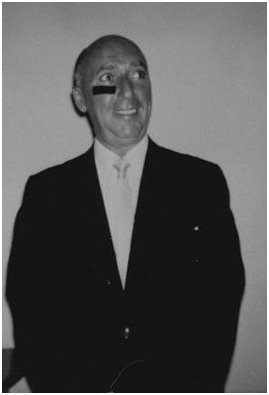 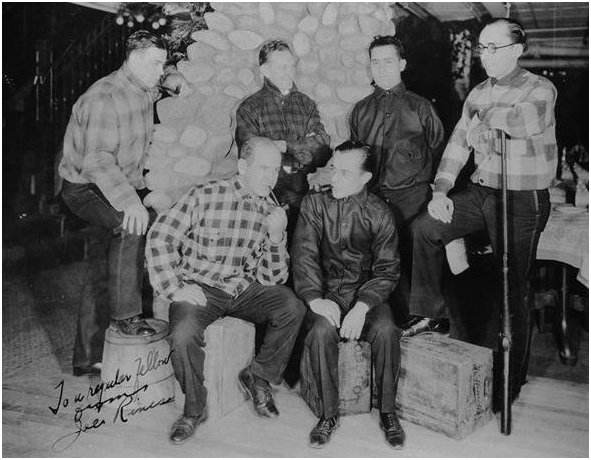 |
John
Ryan was the name Joe Rines used when he released his "party records,"
as risque recordings from those years were known. His contribution was
"I Wish I Were a Fairy," from 1940. I was lucky to find these
two photos on the net, but have no idea why there appears to be a black
box under is eye. In the group shot he's the one with the pipe, sitting.
|
|
Above, rare pic of Bert Savoy. Text and smaller pics from Charles Cage's wonderful site Dragstravaganza |
 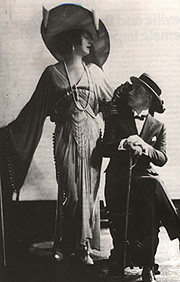 |
|
Born in 1880, Bert Savoy began his drag act doing a dance act at freak shows in Boston and polished it in the wilds of Alaska. Savoy had begun his partnership with straight man (!) Jay Brennan the year before after the former picked up the latter on a streetcar. The team was a huge success; they headlined in the Zeigfeld Follies of 1918. Unlike other female impersonators of the day (such as the notoriously closeted Julian Eltinge) Savoy was pure camp on and off the stage. The two routines which gave rise to Savoy's catchphrases "You Don't Know The Half Of It Dearie" and "You Must Come Over" were preserved for posterity on a rare 1923 Vocalion recording made shortly before Savoy's untimely demise. Click for Bert Savoy's bio; and Click Here for more rare pics |
|
Jean Malin
Jean (sometimes Gene) Malin got his start as a female impersonator in the 20s, but his greatest success would come later as a noted emcee during the time of the short-lived Pansy Craze of the early 30s. He died in 1934, accidentally backing his car off the Santa Monica pier; actress Patsy Kelly, who was with him at the time, survived. He left behind but two recordings, released posthumously and pressed in a single royal blue shellac 78. Pics from Charles Cage. [information source: "Gay New York (Gender, Urban Culture, and the Making of the Gay Male World, 1890-1940)" by George Chauncey] Jean Malin Video Clip! A
scene from the 1933 movie "Arizona to Broadway," making this
the earliest footage |
|
Bruz Fletcher
Stoughton J. "Bruz" Fletcher appeared at the Casino Town Club (NY) in 1934 and the Club Bali in Los Angeles in 1936, '39 and 1940. Due to frequent police crackdowns on gay performers, he had difficulty finding work. He grew increasingly despondent and committed suicide on Feb. 8, 1941 at the age of 35. See the great site Blue Pages for his discography. And also check the fascinating Bruz Fletcher bio site put together by Tyler Alpern, and while you're there, see his Francis Faye section. Also Click Here for some info on my own site. |
|
Above left, the king of sophisitcated lyrics, Cole Porter. Hopefully this year's biopic of him, "De-Lovely" will be more faithful than the 1946 fictionalized Cary Grant version in "Night and Day." That version heterosexualized Porter. And the recordings of Kelly Harrell (above right, 1889 - 1942) are revered among fans of early American folk music. He paid little mind to pronouns and the two CDs of his complete works (1925 - 1929), issued in Austria in 1998, contain nine male-to-male songs. |
|
|
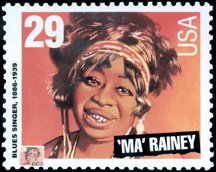 |
Ma Rainey, often called the Mother of the Blues, gave us the classic "Prove It On Me Blues," in 1928. Gladys Bentley, right, had no songs with "out" lyrics, but in her act she was very openly lesbian. Below is a 1942 ad for her appearance at the lesbian night club Mona's. And, for a great photo of rare piece of Bentley memorabilia, see the script page. |
 |
|
No, I don't own "Prove
It On Me Blues" on a 78, but I found the
|
|
Below, Frankie "Half-Pint" Jaxon often performed his songs in drag, taking the role of a woman, adding loads of double entendre to his already risque lyrics. For a lot more info on him, and many song files, see the excellent site Red Hot Jazz.
|
|
|
|
It would be hard to think of a female impersonator with a longer or more colorful career than Rae/Ray Bourbon, with scores of 78's, 45's and 10" and 12" LPs spanning four decades. But I'll stop here, because any praise or information I can give you on Bourbon cannot compare to what you'd find in by clicking the box below to go to the terrific site hosted by the expert, Randy Riddle. |
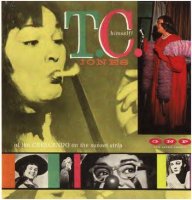 |
From the well-known to the very obscure, click the boxes for more info |
 |
|
|
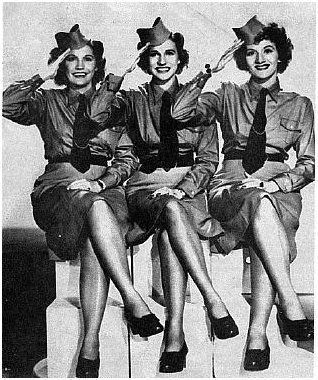 |
In 1944 the Andrews Sisters gave the world the campy "Three Caballeros." You know, "we're three caballeros, three gay caballeros..." and it's been in countless drag acts ever since, including one immortalized in the 1976 movie "The Ritz." But in the 50's and 60's it seemed the only mention gays got was in the super stereotypical images portrayed in many novelty songs. This show features a collage of five by male artists, including a rather easy target, a gay parody of the Jimmy Dean song "Big Bad John." I've collected a number of those, and you can click the box to see and hear them. |
|
Above,
Casey Anderson, and albums by Peter Dana, and Saul T. Peter.
|
|
The photo below is not music-related, but I couldn't resist its camp value. In my collage I played part of a song called "Queen of Fire Island." Well, on the net I happened upon Jamie Lynn, the real Queen of Fire Island, at least for 1969.
|
|
Nan Blakstone and Ruth Wallis And in the 1940's there were two women artists who were poking fun at gay people, and I think they did so in a more positive manner and with more class. Nan Blakstone and Ruth Wallis both did "party" records, and you can view their discographies at the site Blue Pages (by clicking Blakstone and Wallis). Blakstone has an earlier version of "He Should Have Been a WAC," called "Emmoine Looks Back at his Army Days." Besides "Queer Things Are Happening," Wallis had two other noteworthy gay-related songs, "De Gay Young Lad," and "He'd Rather Be a Girl." Wallis was known as the "High Priestess of Double Entendre," and she did it all. She sang, wrote her own material and had her own record label. A musical based on her life opened on Broadway in 2003 and ran for almost a year. It was called "Boobs! The Musical: The World According to Ruth Wallis." |
|
Click for More on Nan Blakstone
|
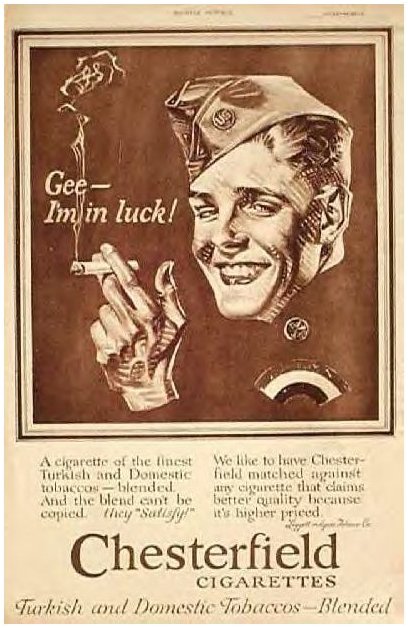 |
The gay parody of the Chesterfield Cigarettes ad on this show is from the album shown on the right, "It's Hee Hee Hee Hee Larious." It was pressed privately by Jonathan Winters as a gift for some of his friends, and is therefore one of the most sought-after comedy recordings. Note that is says on the front "A Collector's Item of JW." The fake commercial is well-done, if a bit homophobic. |
|
|
|
|
Beverly Shaw Beverly Shaw was a night club singer who moved to Los Angeles in the early 50s and performed at the Flamingo Club, and after several years bought her own night spot, the Club Laurel, where she starred for almost 15 years, making it one of the most popular gay clubs in the city. Probably in the late 50s or early 60s she issued her own album, called "Songs Tailored To Your Taste." Click below for much more. |
|
Lisa Ben Lisa Ben is pseudonym, and an anagram of the word lesbian. She's a hero of our movement for producing the very first openly gay magazine, Vice Versa, in 1947. And I love that she was probably the first gay person to record gay parody songs. I've put together a mini-archives on her work, which you can visit by clicking the box above, and read every issue of Vice Versa, and poems and letters by her, including a letter she wrote to me in 2003. Also you'll find her hand-typed lyrics to "Frankie and Johnnie"
In 1960 the lesbian organization Daughters of Bilitis released a 45 rpm record of two of her songs. The ad above appeared in the September 1960 issue of One, The Homosexual Viewpoint, shown between the two sides of her historic 45. The photo of her above is from 1996.
Click for Much More on Lisa Ben and Vice Versa
|
 |
|
Bobby Marchan In 1960 Bobby Marchan had a #1 R&B hit with the song "There Is Something On Your Mind," and he had quite a colorful background. In 1953, he organized a troupe of female impersonators called "The Powder Box Revue" and when it was booked in New Orleans for a while he decided to stay, and worked in the clubs as a female impersonator, emcee and singer. He was signed to Ace Records and worked for a while with Huey Piano Smith, producing some of the finest New Orleans Rock & Roll. He recorded for various record labels through the 70s but never matched his hit "There Is Something On Your Mind."
Jackie Shane And Jackie Shane was a soul singer who performed mainly in the Toronto area and was known for his flamboyant effeminate stage persona. He had a top ten hit in Canada in 1963 called "Any Other Way."
|
|
Troy Walker Another flamboyant artist, Troy Walker, teetered on the edge of success in the early 1960's, working L.A.'s Sunset Strip. His dynamic 1964 album "Troy Walker Live" might have gone somewhere, but for his rendition of Judy Garland's "Happiness Is A Thing Called Joe." The show biz world just wasn't ready to promote an album containing what appeared to be a man singing a love song to another man.
above, from a very rare appearance by Walker in Hollywood in February, 2000 See My Troy Walker Tribute Section
|
|
|
|
I'm wrapping it all up with a couple campy flashbacks. One is to the queer classic "Masculine Women, Feminine Men." In 1926, Merritt Brunies & His Friars Inn Orchestra recorded one of ten versions I've collected of this song, but I think it's the best. I've devoted a whole page to the song, and you can Click to visit it. And, in 1953, Perry Como recorded the accidentally gay song "Keep It Gay." It's so breezy and, er, gay that it always makes me smile.
|
|
And, some pics just for fun...
below, Rock Hudson, selecting music....did he really listen to Burl Ives?
Above, click for a classic scene
|
